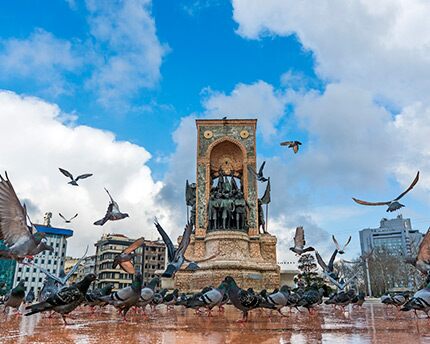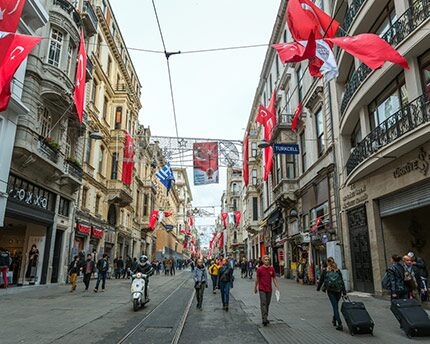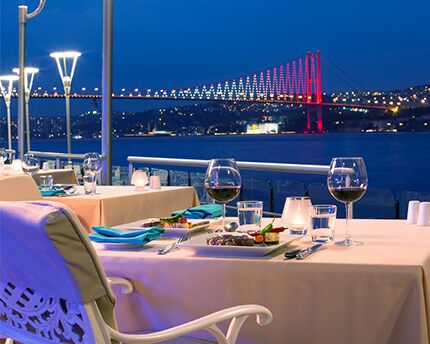Taksim
No matter what time of day you stroll through Taksim, its streets will always be hectic and busy. Connected to the old town by Galata Bridge, this sector of Istanbul never sleeps. It’s the perfect place for shopping and visiting museums during the day, and having dinner and drinks at dusk. As the sun goes down, it turns the city’s minarets and domed mosques a reddish tone and makes the Bosphorus sparkle, the waters that divide this transcontinental city in two, where Europe and Asia gaze at one another in mutual respect from each shore.
Taksim Square is the heart of the neighbourhood and the place used to celebrate all kinds of local festivities. It’s also used for protests and demonstrations when these take place in the city. The Turkish word “taksim” means “division” or “distribution” and refers to the area’s old purpose: from 1732 onwards it received water that was piped from the north and distributed it to the capital’s different neighbourhoods. Today, the square is a meeting point for tourists and locals alike, and is also an urban transport hub because you’ll find the metro’s central station and main city bus station here.
The Monument to Independence stands in the centre of the square, a group of sculptures made by Italian artist Pietro Canonica in 1928 to commemorate the fifth anniversary of the founding of the Republic of Turkey in 1923. Unsurprisingly, the work features portraits of key figures in Turkish nationalism, including Kemal Atatürk, the country’s first president. The Kemal Atatürk Cultural Centre is also dedicated to the first president; this cutting-edge building is home to the Theatre Festival of Istanbul and puts on temporary exhibitions and ballet performances, in addition to other artistic events.
Taksim Gezi Park is just a few metres from the square and is a green lung designed by French architect Henri Prost. He was also behind the 2013 Occupy Taksim protest movement, created to fight plans to build a shopping centre in the park.
Istiklal Avenue starts at the far side of the square and is a pedestrian street that is well worth walking down, or taking the legendary and nostalgic tram, because its stands, varied buildings and continuous flow of people is the true essence of Istanbul. Essential stops include trying confectionery at Hace Bekir (Istiklal Avenue, 83), which opened its doors in 1777, and wandering through Çiçek Pasajı (“Flower Passage”) a magical space where you can sample delicious Turkish cuisine under a glass arcade.
Nearby plans
Related plans

Taksim Square, the heart of Istanbul’s European side.
The ever-bustling Taksim Square, which lies on the European side of Istanbul, is the perfect place to get a true feel for this multicultural city that spans the divide between the East and West.

Istiklal Avenue, the liveliest street in Istanbul
Istiklal Avenue is a busy pedestrian street that offers travellers many leisure possibilities in the heart of Istanbul: shops, cinemas, theatres, restaurants, etc.

Where to eat in Istanbul, in Europe, Asia, and by the Bosphorus
Istanbul is a huge restaurant hub; on every street corner and square, there’s a restaurant or street stall where you can enjoy delicious Turkish cuisine.


